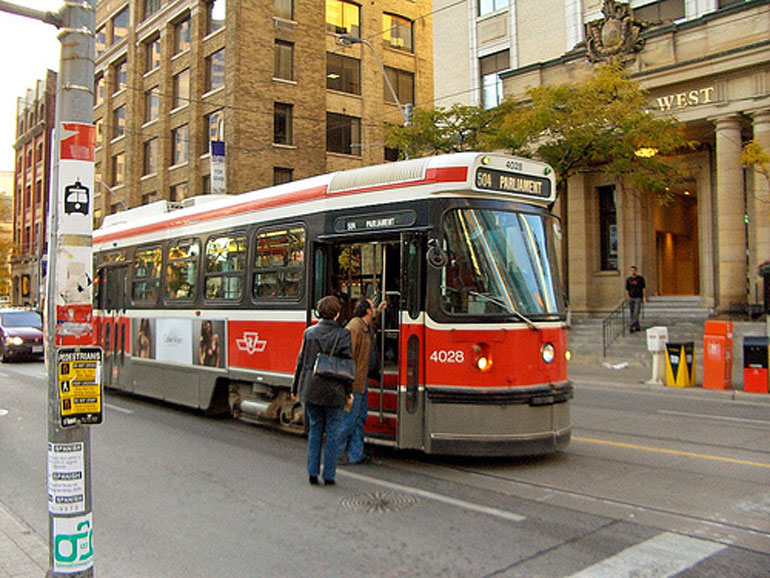
Toronto subway making a stop at King station (Wikimedia)
By: Sulaiman Akbari
Overcrowding on TTC buses, streetcars and subway trains seems to be a never-ending problem.
Of the near 200 bus and streetcar routes, 50 of them are overcrowded on a daily basis, according to TTC spokesperson Stuart Green.
“Overcrowding is caused by the type of vehicle and time of day and depending on the situation,” Green said. “Whether it’d be the morning rush or evening rush, if there is so much as one person standing even if the vehicle isn’t entirely full, it’s considered to be overcrowded.”
Green said they have these standards set so they can plan for service on the different routes. They have 1,900 periods each week they have to plan for, including the morning, afternoon and evening rush, as well as midday and weekends.
By having set standards, they can measure how they’re doing based on service delivery and adjust the service as needed.
Humber College student Pierre Williams uses the TTC almost every day and he is frustrated with the overcrowding.
“Every time I come to school, I am almost always on a packed subway train or bus,” he said. “It’s a pain having to deal with it every day.”
However, Williams sometimes sees the TTC making accommodations when there is a large crowd waiting for his bus, and he appreciates it.
“Sometimes when I’m at Kipling [Station] there would be two, sometimes three 191 buses back-to-back, ready to take people,” Williams said. “So, it’s good to see they’re [TTC] taking action for my route.”
Murtaza Haider, an associate ‘travel and demand’ professor at Ryerson University, says during peak times there is more demand than service, which causes overcrowding.
“During high demand periods, what you have is more people trying to use the service and the capacity of the system,” he said.
This is why Williams experiences overcrowded buses and subway trains because there is a higher demand from riders using the bus or subway trains.
In terms of increasing service, Green said they can only do so much.
“We have to look at the totalities of our transit system, we have to look across the city at all 190 routes, and say ‘where do we need to deploy resources and what is the most desperate need for resources’,” he said.
Another reason why overcrowding is worse than before is because of the delay in the delivery of new streetcars and buses. TTC was supposed to have already received 145 streetcars from Bombardier, but to date has only received 45.
Haider believes that if TTC had received their order of streetcars and buses on time, the overcrowding wouldn’t be such a big issue today.
“The current buses and streetcars running are good to carry 5,000-10,000 riders per hour per direction, but the demand cannot withstand the service on old operating vehicles,” he said.
Green said the only way overcrowding can be reduced is by adding more TTC operators and vehicles. At present, within the resources they have available, there are certain things TTC can do to adjust service, such as deploying more vehicles at certain times of the day.

